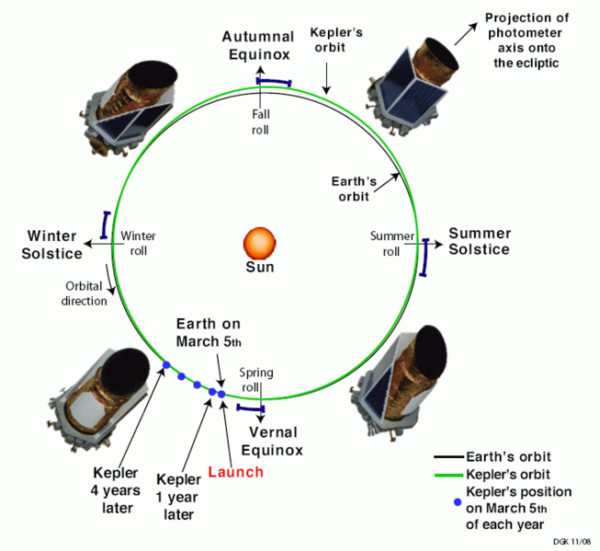 Close Topic Options
Close Topic OptionsExoplanet - Kepler Space Observatory
Exoplanet Kepler Space Observatory - Sciences, Education, Art, Writing, UFO - Posted: 11th May, 2016 - 2:07am
Observatory Space Kepler Exoplanet
I love this stuff! The Kepler project is even more exciting. It is processing observations of about 100,000 stars over the next several years and is capable of detecting earth-sized planets. It has already verified five new planets, though they are far larger than earth-sized, but as data keeps coming in and gets refined, the "other earths" will come into focus. Go to NASA if you are interested in finding out more about this amazing effort.
Exoplanet - Kepler Space Observatory UFO & Writing Art Education Sciences
Name: Starmonger
Comments: Is this saying that a star is just pulling a planet closer to it as it spins or that stars have their own 'moons'?
Observatory Space Kepler Exoplanet
Starmonger,
I'm not sure what you are asking. The article states that the exoplanet is the first to be observed in orbit. Before that, all detections of such planets were done by the wobble in the star's motion. Kepler finds planets by measuring the change in brightness of a star as a planet makes a transit across it.
Exoplanet - Kepler Space Observatory
The future of NASA's planet-hunting Kepler space observatory is in question after a part that helps aim the spacecraft failed, the U.S. Space agency said. Ref. CNN
Exoplanet Kepler Space Observatory
One of the earth like planets orbiting a star is said to have no tilt to it thus it is more like a spring day year round. While that is all good for temperature wise it will mean that more storms will be around. I think it would be interesting to go to and study one of these earth like planets.
 TOPIC: Exoplanet - Kepler Space Observatory
TOPIC: Exoplanet - Kepler Space Observatory Extra-solar planet in orbit around a young star
Extra-solar planet in orbit around a young star
